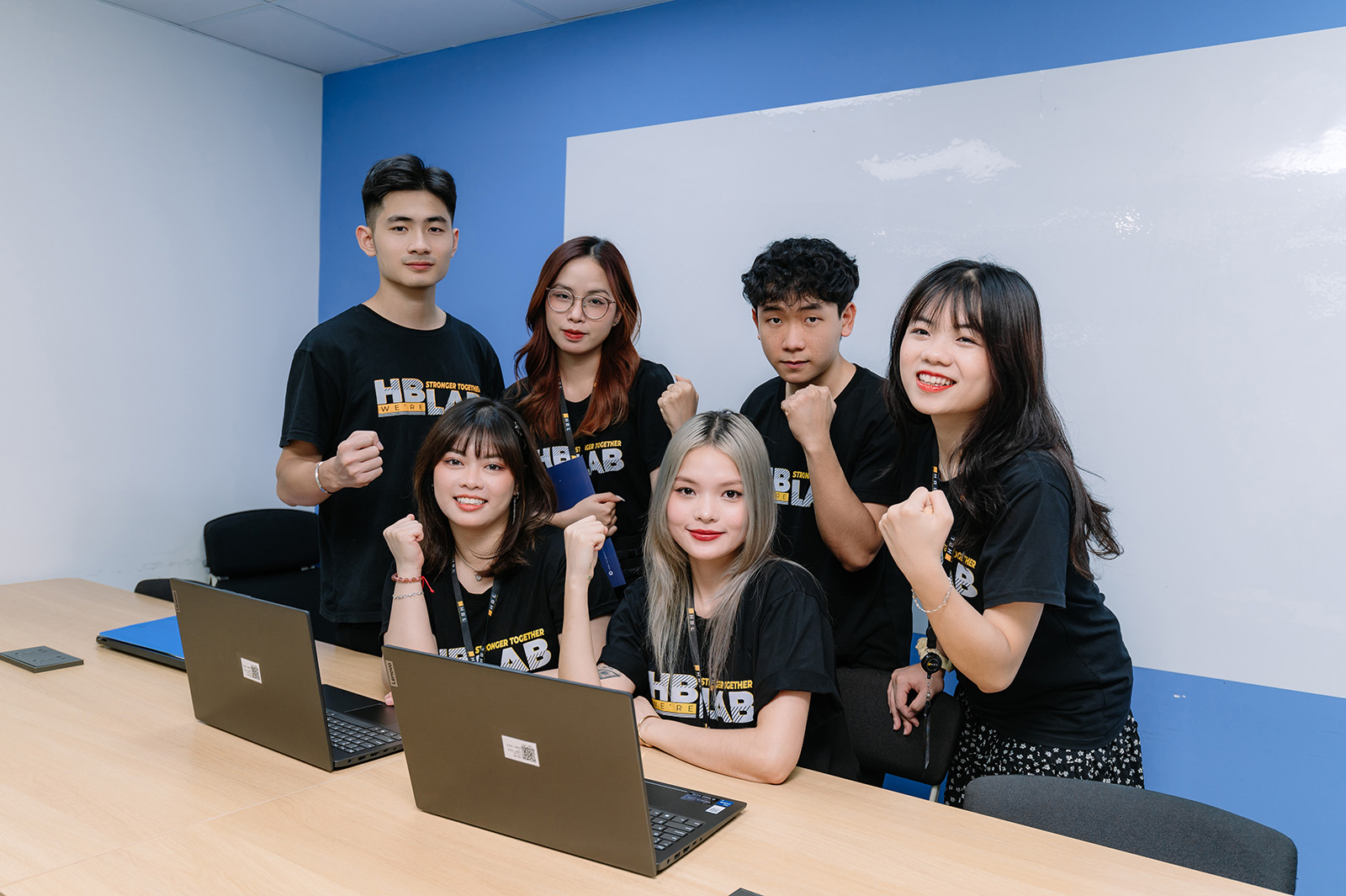In today’s dynamic software landscape, traditional development methodologies often fall short. Rigid and ill-equipped to handle the industry’s ever-changing demands, they struggle to keep pace. In response to this growing need for flexibility and efficiency, the Agile Software Structure model has emerged, offering a fresh and promising approach to software development.
This article delves into the essential elements of a successful software development team. We’ll explore various team structure models and address the challenges posed by team dynamics. By understanding the importance of a well-structured team, you’ll gain the knowledge to build a team perfectly suited for your project’s needs.
What is an Agile Development Team? Traditional VS Agile project management?
An Agile development team is a cross-functional group of individuals working together to deliver software flexibly and collaboratively.
Here’s a table summarizing the key points:
| Feature | Traditional Project Management | Agile Project Management |
| Team Structure | Hierarchical organization | Cross-functional teams |
| Roles | Defined, specialized roles | Flexible roles |
| Process | Linear and sequential | Iterative and incremental |
| Documentation | Extensive and comprehensive | Lightweight and adaptive |
| Delivery | Single, final delivery at the end | Continuous, incremental delivery |
| Planning | Detailed upfront planning | Adaptive, ongoing planning |
| Scope | Fixed scope | Flexible, evolving scope |
| Communication | Formal and scheduled | Frequent and informal |
| Feedback | Less frequent, at milestones | Continuous, regular feedback |
| Change Adaptability | Difficult to incorporate changes | Welcomes and adapts to changes |
| Phases | Requirements, Design, Implementation, Verification, Maintenance | Continuous cycles of planning, execution, and review |
| Flexibility | Low | High |
Advantages of Choosing Agile Software Development Management
Agile software development management offers a compelling alternative to traditional methods, delivering a multitude of advantages for businesses of all sizes. Here’s a deep dive into the key benefits of choosing Agile:
1. Enhanced Adaptability and Flexibility:
- Responding to Change: Agile embraces change as an inevitable part of the development process. Teams can readily adapt to evolving market needs, customer feedback, or shifting priorities. This flexibility ensures the final product aligns with current expectations and delivers real value.
- Shorter Development Cycles: Agile breaks down projects into smaller, more manageable units called sprints. This allows for faster iteration and quicker identification of potential issues, minimizing the impact of change on overall project timelines.
2. Faster Time to Market:
- Early and Continuous Delivery: Agile focuses on delivering functional software increments in short sprints. This enables early feedback from users and stakeholders, accelerating the time to market for new features and functionalities.
- Reduced Risk of Product Obsolescence: By delivering value early and often, Agile minimizes the risk of a product becoming obsolete by the time it reaches the market. Teams can adjust course based on feedback, ensuring the product remains relevant and competitive.
3. Improved Quality and Value:
- Continuous Integration and Testing: Agile promotes continuous integration and testing throughout the development lifecycle. This allows for early detection and rectification of bugs, leading to a higher overall product quality.
- Focus on User Needs: Agile emphasizes close collaboration with stakeholders and users. Frequent feedback loops ensure that the final product meets user needs and expectations, delivering tangible value.
4. Increased Productivity and Team Morale:
- Empowered Teams: Agile fosters a culture of self-organization and empowerment. Team members take ownership of their tasks, make decisions collaboratively, and are accountable for the results. This leads to higher motivation, engagement, and a sense of accomplishment.
- Reduced Communication Silos: Cross-functional teams in Agile work seamlessly together, eliminating communication silos. This fosters better collaboration and problem-solving, ultimately leading to increased productivity.
5. Effective Management of Complex Projects:
- Breaking Down Complexity: Agile breaks down complex projects into smaller, more manageable chunks, making them less daunting and easier for teams to tackle. This promotes better focus and prioritization, leading to more efficient resource allocation.
- Improved Visibility and Transparency: Agile methodologies utilize tools and practices like Kanban boards and daily stand-up meetings that enhance project visibility and transparency. This allows stakeholders and team members to stay informed and adapt to changing needs.

6. Reduced Risks and Costs:
- Early Detection of Issues: The iterative nature of Agile allows for early identification and correction of issues. This minimizes the cost of rework and potential project failures associated with traditional, heavyweight development methodologies.
- Improved Resource Utilization: Agile promotes better resource utilization by allowing teams to focus on high-priority tasks and adjust their approach based on feedback. This avoids unnecessary work and associated costs.
7. Adaptability to Limited Resources:
- Suitable for Startups and Small Businesses: Agile’s flexible and efficient approach makes it particularly well-suited for startups and small businesses with limited personnel and budget constraints. Teams can prioritize tasks effectively and maximize their resources to achieve their goals.
- Focus on Value Delivery: Agile emphasizes delivering value early and often. This allows startups and small businesses to generate revenue and acquire users quickly, which can then be used to fuel further development.
By adopting Agile software development management, businesses can reap significant benefits, including faster time to market, improved product quality, and increased team productivity. However, it’s essential to assess project requirements, team dynamics, and organizational culture to determine if Agile is the right fit. When implemented effectively, Agile can empower teams to deliver high-quality software that meets the evolving needs of the market and delivers tangible value to users.
Types of Agile Software Development Team Structure
The rise of outsourcing in software development has intensified the debate around optimal team structures. After all, how a team is assembled and organized significantly impacts project success. This structure dictates team member collaboration and sets the project’s overall pace.
Generalist
Characteristics:
- Cross-Functional Skills: Team members possess a broad range of skills, enabling them to work on various aspects of the project.
- Flexible Roles: Members can switch roles and responsibilities based on project needs.
- Collaborative: Emphasizes collaboration and knowledge sharing.
Advantages:
- Adaptability: High flexibility allows team members to take on different tasks as priorities shift.
- Improved Collaboration: Enhanced understanding and collaboration across different aspects of the project.
- Reduced Bottlenecks: Less dependency on specific individuals for certain tasks, reducing potential bottlenecks.
Disadvantages:
- Depth of Knowledge: May lack deep expertise in specific areas compared to specialists.
- Learning Curve: Members may need to spend time learning new skills, which can slow down progress.
Specialist
Characteristics:
- Deep Expertise: Team members are highly skilled in specific areas, such as front-end development, back-end development, testing, etc.
- Defined Roles: Clear delineation of roles and responsibilities based on expertise.
- Focused Work: Members concentrate on their area of expertise, ensuring high-quality output in that domain.
Advantages:
- High-Quality Output: Expertise in specific areas can lead to higher quality and more efficient work.
- Reduced Learning Time: Specialists can quickly address tasks within their domain, reducing the need for constant learning.
Disadvantages:
- Less Flexibility: Teams may struggle to adapt quickly to changing project requirements.
- Dependency Risks: High dependency on specific individuals can create bottlenecks if a specialist is unavailable.
Hybrids
Characteristics:
- Combination of Skills: Blends generalists and specialists to balance flexibility and deep expertise.
- Collaborative and Specialized Roles: While some team members have broad skills, others focus on specific areas.
- Dynamic Role Allocation: Roles and responsibilities can shift based on project needs and individual strengths.
Advantages:
- Balanced Approach: Combines the adaptability of generalists with the deep knowledge of specialists.
- Flexibility and Quality: Capable of adapting to changes while maintaining high standards in specialized areas.
- Resilience: Reduced risk of bottlenecks due to a mix of flexible and specialized team members.
Disadvantages:
- Complex Management: Balancing the roles and ensuring effective collaboration can be challenging.
- Potential Conflicts: Differences in working styles between generalists and specialists may lead to conflicts.
Software development team roles and responsibilities
Traditionally, there are two teams in the traditional and agile development models. To better understand these two models, you first need to know about the roles and responsibilities in the traditional software development structure.
Traditional Software Development Team Roles and Responsibilities:
In a traditional software development project, the team structure is typically hierarchical and well-defined, with clear lines of authority and responsibility. Here’s a breakdown of the common roles and their responsibilities:
1. Project Manager
A project manager in a software development team plays a critical role in guiding the project from idea to launch. They act as the conductor of the development orchestra, ensuring all the musicians (developers, designers, etc.) play their parts in harmony to deliver a high-quality software product. Here’s a breakdown of their key responsibilities:
- Planning and Defining the Software Project
- Leading and Motivating the Development Team
- Monitoring and Controlling the Software Development Process
In short, a software development project manager is the bridge between the technical team and stakeholders. They ensure the project stays on track, within budget, and deliver a high-quality software product that meets the needs of the users.
2. Team Lead/ Tech Lead
The Tech Lead is the technical backbone of a software development team. They wear three key hats. First, they act as the architect, defining the technical vision and ensuring the project is built on a solid technological foundation. They champion code quality through reviews and best practices and keep the team updated on emerging technologies that could benefit the project. Second, they serve as a mentor, guiding junior developers, sharing knowledge through code reviews and fostering a collaborative learning environment where everyone can grow their skills. Finally, the Tech Lead bridges the gap between the technical team and non-technical stakeholders, translating complex ideas and advocating for the team’s needs. They also ensure clear communication within the team, keeping everyone aligned on technical decisions and project goals.
3. Software Developers
Software developers are the builders of the software world. They take the technical vision laid out by the Tech Lead and translate it into code. Their core responsibilities revolve around the entire software development lifecycle:
- Writing clean and efficient code: They use their programming languages of choice to write code that fulfills the project requirements. This involves a focus on functionality, readability, and maintainability.
- Unit testing and debugging: Developers are responsible for testing their own code to ensure it functions as expected and identifying and fixing any errors (bugs) that arise during development.
- Collaboration and code reviews: They work closely with other developers and participate in code reviews, sharing their expertise and learning from others to improve the overall code quality.
- Understanding requirements and translating them to code: Developers need to grasp the project’s requirements and translate them into clear and concise code that meets the needs of the users.
- Staying up-to-date on new technologies: The tech world is constantly evolving, and software developers need to keep their skills sharp by learning new programming languages, frameworks, and tools relevant to their projects.
In short, software developers are the coding craftsmen who bring software products to life, ensuring they function as intended and meet the needs of the users.
4. Quality Assurance Engineer
Quality Assurance (QA) Engineers are the guardians of quality in a software development team. Their focus is on ensuring the final product is free of defects and delivers a positive user experience. Here’s a breakdown of their key duties.
- Testing and Defect Identification: QA engineers design and execute various tests throughout the development lifecycle to identify bugs, crashes, or usability issues. They meticulously examine the software from a user’s perspective, uncovering any flaws that might hinder functionality or user experience.
- Reporting and Collaboration: They document any issues discovered in clear and concise reports, outlining the steps to reproduce the problem. Collaboration is key, as they work with developers to ensure identified bugs are fixed effectively.
- Staying Informed: The QA field is constantly evolving with new testing tools and methodologies. QA engineers actively learn and stay updated to ensure they leverage the most effective tools for their projects
5. UX/UI Designer
UX/UI designers are the user champions in a software development team. They bridge the gap between the technical aspects and the human experience, ensuring the software is not just functional but also enjoyable and intuitive to use. Their responsibilities encompass the entire user journey:
- Understanding Users: Through user research (surveys, interviews, etc.), they gain a deep understanding of the target audience, their needs, pain points, and behaviors. This user empathy is crucial for designing a product that resonates with them.
- Crafting User Experience (UX): They design the overall user flow, considering how users will navigate and interact with the software. This involves creating wireframes, sitemaps, and user personas to visualize the user journey and ensure a smooth and efficient experience.
- Building User Interface (UI): They design the visual elements of the software, focusing on aesthetics, usability, and user interaction. This includes designing layouts, icons, and color schemes that are not only visually appealing but also intuitive and user-friendly.
- Prototyping and User Testing: They create interactive prototypes to simulate the user experience and gather feedback from real users. This iterative process allows them to refine the design based on user input and ensure it meets their needs.
6. Business Analyst (BA)
The Business Analyst (BA) acts as the bridge between the business world and the software development team. They translate business needs into actionable requirements for the software. They ensure the software is built on a foundation of clear requirements, meeting the needs of the business and ultimately, the end users.
- Understanding Business Needs: The BA dives deep to grasp the underlying goals, challenges, and processes of the business. They conduct interviews, analyze data, and collaborate with stakeholders to gain a comprehensive understanding of the problem the software aims to solve.
- Gathering and Analyzing Requirements: Once they understand the business needs, the BA works closely with stakeholders to gather specific requirements for the software. This involves user stories, functional requirements, and non-functional requirements, ensuring all aspects of the software meet the business objectives.
- Prioritizing and Specifying Requirements: With a comprehensive list of requirements, the BA prioritizes them based on importance and impact. They then translate these requirements into clear and concise user stories and specifications that the development team can understand and implement.
- Facilitating Communication and Collaboration: The BA acts as a communication hub, bridging the gap between technical and non-technical audiences. They ensure clear communication of requirements to developers and stakeholders, fostering collaboration throughout the development process.
- Monitoring and Validation: The BA doesn’t just hand off requirements – they stay involved. They monitor the development process to ensure the software aligns with the defined requirements and validates the final product to confirm it addresses the original business needs.
7. Software Testing Engineer
The main responsibilities of Software Testing Engineer are:
- Find bugs: Design tests, run them, and identify issues.
- Report clearly: Document problems for developers to fix.
- Collaborate effectively: Work with developers to ensure smooth resolution.
Core Agile Roles:
In contrast to traditional models, the Agile model has two additional important roles: Product Owner and Scrum Master.
1. Product Owner
The Product Owner plays a critical role in Agile software development, acting as the bridge between the product vision and the development team. Here’s a breakdown of their key responsibilities:
- Visionary Leader: The Product Owner defines the product vision and roadmap, ensuring it aligns with business goals and user needs. They envision the product’s future state and communicate this vision to stakeholders.
- Backlog Maestro: They manage the product backlog, which is a prioritized list of features and functionalities. This involves adding, refining, and prioritizing backlog items based on user needs and business value.
- Value Maximizer: The Product Owner prioritizes features that deliver the most value to the end user. They constantly analyze market trends, user feedback, and business goals to ensure the product delivers the greatest impact.
- Stakeholder Whisperer: They act as the voice of the product, communicating with stakeholders like customers, executives, and sales teams. This involves gathering feedback, managing expectations, and ensuring everyone is aligned on the product direction.
- Acceptance Criteria Expert: The Product Owner collaborates with the development team to define acceptance criteria for user stories in the backlog. These criteria determine when a feature is considered “done” and meets user requirements.
In essence, the Product Owner champions the product’s success. They ensure the team is building the right things, in the right order, and delivering maximum value to the end user.
2. Scrum Master
Agile software development teams rely on daily stand-up meetings, often called Daily Scrums, to maintain focus and collaboration. Scrum Masters play a pivotal role in the success of Agile teams, serving as facilitators, coaches, and advocates. They are responsible for guiding teams in understanding and adopting Agile principles and practices, eliminating impediments that hinder progress, and ensuring seamless team operations.
These brief encounters serve as a platform for team members to:
- Synchronize Progress: Briefly share what they accomplished the previous day and what tasks they plan to tackle next.
- Identify Roadblocks: Discuss any challenges or impediments hindering progress and seek solutions from the team.
- Plan the Day Ahead: Collaboratively adjust the workload or workflow as needed to ensure everyone is aligned on priorities.
The Scrum Master typically facilitates these meetings, keeping them concise and focused. While some teams have a dedicated Scrum Master, others might rotate the role to encourage shared responsibility and leadership within the team.
Cross-functional collaboration methods for Agile teams
For Agile teams to thrive, seamless collaboration is key. Here’s how to break down silos and build a strong, cross-functional unit:
- Daily stand-ups & visual tools: Keep everyone informed with quick daily meetings and visual workflow boards.
- Shared planning & ownership: Involve all disciplines in user story refinement and sprint planning to ensure everyone’s aligned.
- Team building & shared experience: Organize activities and rotate roles to build connections and empathy across departments.
- Continuous improvement: Regularly assess collaboration through retrospectives and track metrics to identify areas for improvement.
- Psychological safety: Foster an open environment where team members feel comfortable sharing ideas and concerns.

By implementing these methods, Agile teams can work together seamlessly, leading to faster delivery and higher quality software.
Building a High-Performing Agile Team: A Step-by-Step Guide
To build an effective Agile Development team, you can refer to the steps in the following process:
1. Assemble the Right People:
- Focus on Skills & Mindset: Look for individuals with not just technical skills, but also an Agile mindset that prioritizes collaboration, adaptation, and continuous improvement.
- Embrace Diversity: Build a team with diverse backgrounds, experiences, and problem-solving approaches. This fosters creativity and innovation.
- The Right Size Matters: Aim for a team size that’s large enough to have diverse expertise but small enough to facilitate communication and collaboration (typically 5-9 members).

2. Foster a Collaborative Environment:
- Shared Goals & Vision: Clearly define the team’s goals and the product vision. Ensure everyone understands the “why” behind the work.
- Open Communication: Encourage open communication and information sharing. Utilize daily stand-up meetings, collaborative tools, and regular feedback loops.
- Psychological Safety: Cultivate a safe space where team members feel comfortable sharing ideas, raising concerns, and admitting mistakes.
3. Establish Agile Ceremonies:
- Sprint Planning: Dedicate time to collaboratively define sprint goals, tasks, and acceptance criteria for each sprint.
- Daily Stand-up Meetings: Hold brief daily meetings for team members to share progress, discuss roadblocks, and stay synchronized.
- Sprint Reviews: Showcase completed work to stakeholders and gather feedback at the end of each sprint.
- Sprint Retrospectives: Hold regular retrospectives to reflect on the previous sprint, identify areas for improvement, and implement changes for future sprints.
4. Embrace Continuous Learning:
- Invest in Training: Provide opportunities for team members to learn new skills and stay updated on Agile methodologies and best practices.
- Knowledge Sharing: Encourage knowledge sharing within the team through brown bag sessions, code reviews, or pair programming.
- Embrace Experimentation: Agile thrives on experimentation. Encourage the team to try new approaches, learn from failures, and continuously improve.
5. Empower the Team:
- Self-Organization: Encourage the team to self-organize, define their workflows, and manage their workload within the sprint framework.
- Decision-Making: Empower the team to make decisions about their work. This fosters ownership and accountability for results.
- Celebrate Successes: Recognize and celebrate the team’s big and small achievements. This motivates the team and reinforces a positive working environment.
By following these steps and fostering a culture of collaboration, continuous learning, and empowerment, you’ll be well on your way to building a high-performing Agile team that consistently delivers high-quality software and thrives in the ever-changing world of software development.
Conclusion
Agile teams prioritize strategic skill allocation, ensuring every member’s expertise directly contributes to project success. This focus on maximizing individual strengths leads to faster, higher-quality product delivery, saving both time and resources.
Are you considering a dedicated development team but concerned about time, budget, or resource limitations? At HBLAB, we specialize in Agile methodologies that optimize efficiency and deliver high-quality software. Contact us today to discuss your project and explore how we can simplify the complexities of software development.
See more:
– Top 15 Most Reputable IT Outsourcing Companies in Singapore
– Data-Driven Business Strategy: The Key to Unleashing Breakthrough Growth– Staff Augmentation – The Future of Agile and On-Demand Talent Solutions




